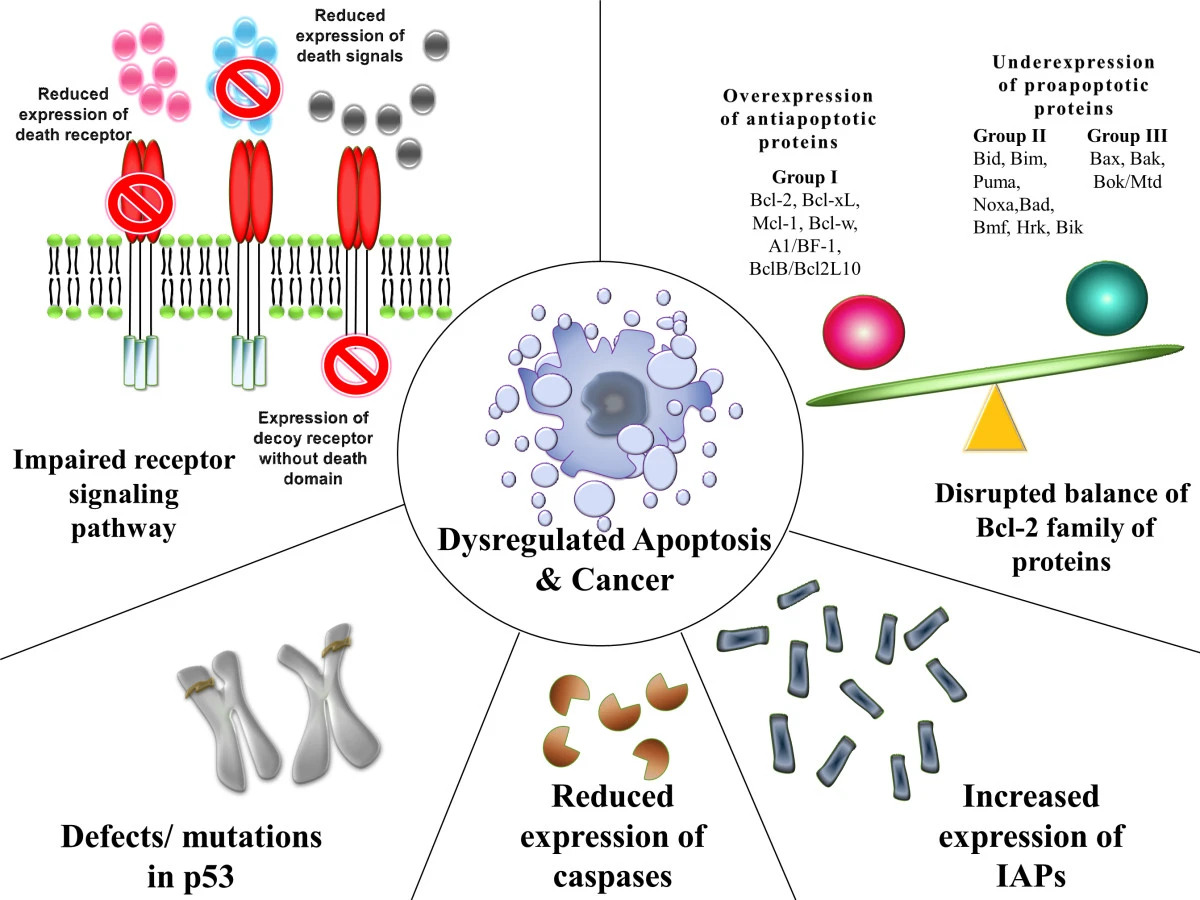Playlist
Show Playlist
Hide Playlist
Oncogenes – Carcinogenesis
-
Slides Carcinogenesis Basic Principles.pdf
-
Download Lecture Overview
00:05 Now, before you move on, it's about organisation first that you set up. Then you memorise. 00:08 In that way you have created containers or compartments in which you can then fill it up with details. 00:17 Okay. But first, take a look at the skeleton of the outline here. Important growth factors, think about where you are. Close your eyes. Conceptualize. These are growth factors that are going to work in excess. 00:29 And when they do, they are going to then stimulate the receptors in excess, you are going to have increased signal transduction down to the nucleus and obviously may result in increased growth. The first growth that you will be responsible for is called a FGF. A fibroblast growth factor. 00:46 INT-2 is a FGF. Fibroblast growth factors. 00:51 Another detail. And this could be associated with many types of cancers. And the big one that you definitely want to know, is this one. A growth factor PDGF associated with SIS and the type of cancer this is associated with will be gliomas. 01:07 In other words, astrocytoma. When we talk about neuropathology under astrocytoma there will be two major astrocytomas that you will be responsible for. One in fact will be glioblastoma multiforme. The other one being palisidic type of neuroglioma. 01:25 Our next category would be what does a growth factor bind to. A receptor. So these are receptors that have now become independant autonomous of any control whatsoever. Now these receptors are working in great excess or in great stimulation. And now you can imagine, with autonomous receptor activity that there will be increased signal transduction down to the nucleus. Our big one here will be ERB-B1 and ERB-B2. ERB-B1 and ERB-B2. ERB-B1 well, we have epidermal growth factor receptor. And ERB-B1 is specific for squamous cell cancer of the lung and that you have to know. Then we have ERB-B2. 02:06 How many breast do you have? Two. The other name for this is also Her2/neu. This is the epidermal growth factor receptor that you want to know and it's association with breast cancer more so. You have two major epidermal growth factor receptors. ERB-B1 and ERB-B2. Make sure you know about lung and breast respectively. Then you have another growth factor receptor and this is RET. Now with RET, it's a glial neurotrophic factor receptor. Glial. 02:40 RET is associated with medullary cancer of the thyroid. Well found often with MEN IIa and IIb. Oncogenes and now signal transduction. We have t(9;22) being our second major translocation in this topic. And with t(9;22) you must know that it is a BCR-ABL fusion protein. Memorise that. Do not get BCR confused with BCL2. Students often do that. 03:11 Do not do it anymore. With t(9;22) I told you apart from CML, chronic myelogenous leukaemia, where the median age for this would be? 40s. ALL, acute lymphoblastic leukaemia the most common cause of leukaemia in a child. Both associated with Philadelphia chromosome, BCR-ABL, this then codes for? Good. RTK, or in other words or non-receptor tyrosine kinase. 03:40 At least know the operative word TK. Tyrosine Kinase. K-RAS really the foundation here is RAS. I have mentioned this a few times I promise, I will go into detail. We have to. RAS is coupled with? I asked you kindly to memorise RAS is committed to what GTP. Once again, RAS associated with GTP. For henceforth, if you want, you may want to pronounce or spell pancreas as pancRAS, if that helps you. But we have pancreas and we have the colon being two major cancers, with K-RAS. 04:19 You can have other RAS's as well including H-RAS and also N-RAS and as we continue through our course in pathology, I will tell you where H-RAS is associated with. And N-RAS is already dealing with our 'N' as in Neuro. 04:39 Here we will take a look at nuclear regulators. We are down in the nucleus. We have C-myc and this are working within the nucleus, bringing about Burkitt lymphoma. 'L' as in L-myc would be for? Lung. And more so with small cell lung cancer. And then 'N', as in neuro, neuroblastoma. Take a look at what happened here. We have N-myc and it is then being placed next to these HSR. 05:07 And this regions that N-myc might be associated next to would then cause gene amplification. And that you have to know. 05:17 So take a look at that N-myc and next to HSR then causes major gene amplification. 05:27 Our next topic takes us into cell cycle regulators. Within the cell cycle regulator, I will focus upon cyclin D as being a separate topic, I have to. But anytime that you see cyclin D, these are within the cell and within the cell cycle we will talk about further with tumor suppressor genes. And I will walk you through in great detail the exact mechanism as to how cyclin D is going to promote a cell to be or remain within a cell cycle forever more. 05:51 And cyclin D positive to you, at least memorise mantle cell lymphoma. And this translocation here would be t(11;14). 05:59 What's that chromosome 14 represent to you? It represents immunoglobulin heavy chain.
About the Lecture
The lecture Oncogenes – Carcinogenesis by Carlo Raj, MD is from the course Cellular Pathology: Basic Principles with Carlo Raj.
Included Quiz Questions
What cancer is associated with the SIS oncogene?
- Glioma
- Lymphoma
- Breast cancer
- Pancreatic cancer
- Lung cancer
In a patient presenting with squamous cell lung cancer, which of the following growth factor receptors may be upregulated?
- EGFR
- HER2
- neu
- RET
- NF-1
What is associated with the oncogene KRAS in a patient with pancreatic cancer?
- Increased GTP
- Increased GDP
- Increased HER2/neu
- Increased BCR-ABL fusion protein
- Increased c-myc
Which of the following nuclear regulators is correctly paired with the disease associated with it?
- L-myc: small cell lung carcinoma
- N-myc: Burkitt lymphoma
- C-myc: small cell lung carcinoma
- M-myc: neuroblastoma
- B-myc: Burkitt lymphoma
Customer reviews
5,0 of 5 stars
| 5 Stars |
|
5 |
| 4 Stars |
|
0 |
| 3 Stars |
|
0 |
| 2 Stars |
|
0 |
| 1 Star |
|
0 |




